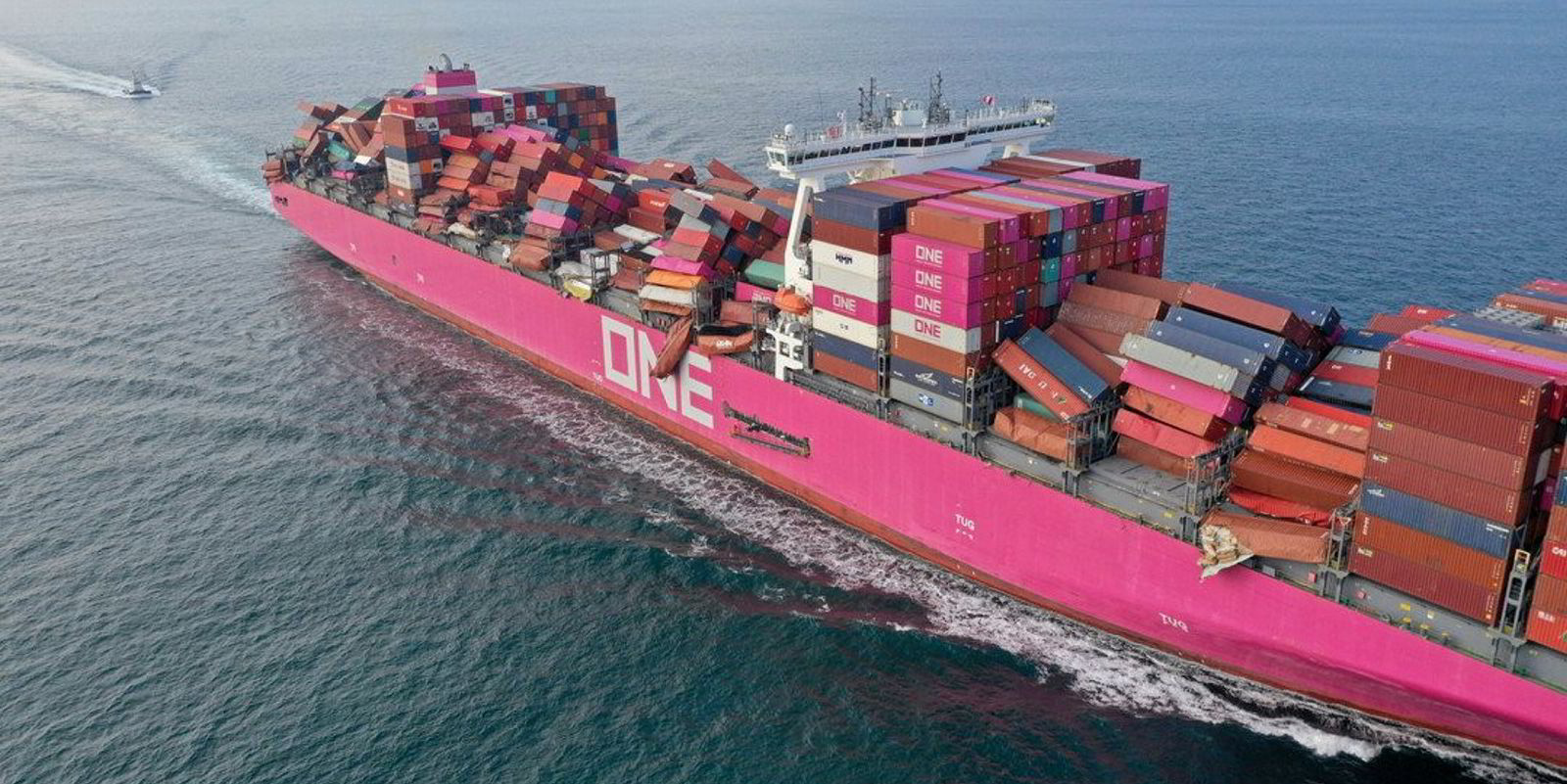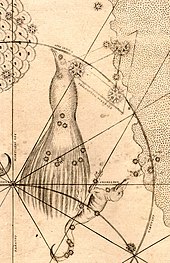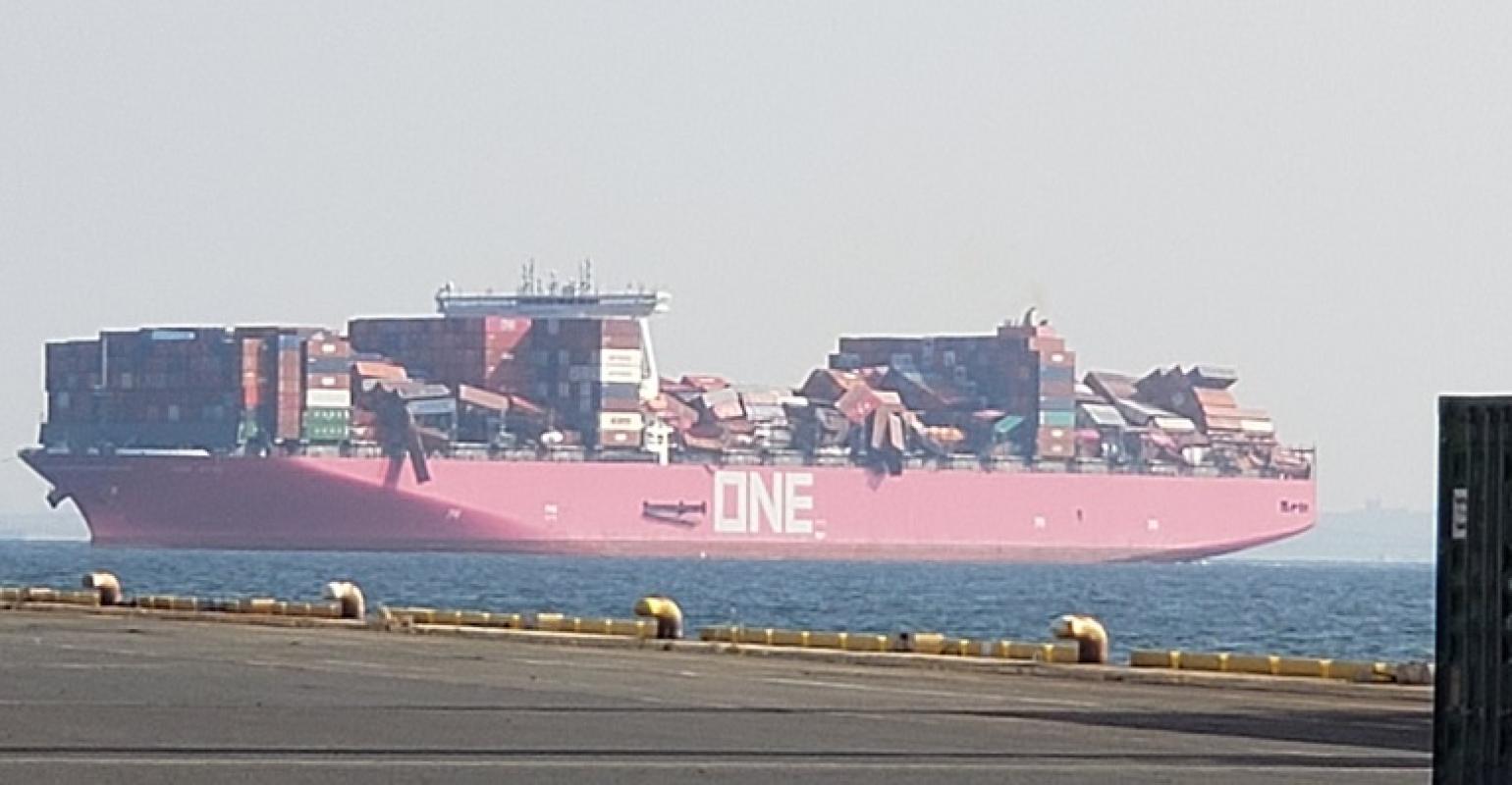Good luck finding a rabbit cage this spring! If that’s what you’re hoping to buy, the dream of doing so may have been crushed or set adrift by the winds of November, if not drowned outright at sea. Apparently the cargo container holding the cages ordered and destined for sale at farm stores in our area is thought to have haplessly slid off the deck of the pink hulled containership hauling it, and into the heaving sea. This happened during the multiple stack collapse that occurred on the ONE Apus on November 30, 2020. According to the statement released, the 14,000 TEU Apus was en route from Yantian, China, to Long Beach when it encountered a “violent storm cell” about 1,600 nautical miles northwest of Hawaii. Gale force winds and large swells caused the containership (built in 2019 for ONE) to roll heavily, dislodging the containers; and as a result, suffer one of the worst container collapses and loss overboard to date. Of the 1,812 containers that went over the side and into the drink (with 64 of them containing dangerous goods (DG) boxes), none have been recovered. The thousands of crushed and damaged containers that remained onboard are slowly being removed and sorted at the Port of Kobe, Japan, where the ship returned following the collapse.
This was ONE’s third reported box spill in less than two years. Established in 2017, Ocean Network Express (ONE), the joint venture of three Japanese carriers, has a fleet of over 250 vessels, including more than thirty super-large ships, such as 20,000 TEU container-ships, with their website declaring them “to be riding a wave of profitability through the first quarter of 2021 and beyond”.
Multiple opinions exist as to what really happened out there, ranging from global warming as the cause of severe storms cells and rogue waves, to profit driven motives involving fuel savings and time constraints with the shortest, most fuel efficient routes through dangerous waters taken at the urging of higher-ups, to outdated, inadequate and compromised lashing and stacking techniques on huge ships that have doubled in carrying capacity over the past ten years and don’t take kindly to giant swells.
Whatever the case, this assessment stands out as warning: Winter in the North Pacific is not a place for the faint-hearted, but the scene of devastation aboard the ONE Apus after the loss or damage of a substantial portion of her deck load is the perfect illustration of what the sea can do to even the biggest ships.
Regarding metaphors, some see the damaged cargo and limping ship representing 2020 and the way it went down. What I see is a shipload of ordered goods and malarkey, overloaded and pushed into unsafe waters by those attempting to game a system for profit. All the while ignoring and not taking into account the forces of nature (and human nature), leading to an encounter that resulted in the tipping over and dumping of box loads of previously ordered and desired material, information and evidence into the Sea of Bamboozlement to disappear and sink without trace or consequence, leaving those in charge to attempt to shift blame and salvage what’s left. While that may be a stretch, it’s a visual of something gone awry in a major way that works for me. And in the sea of all else happening, I wouldn't have known something this major had transpired if a small, person to person report of missing rabbit cages hadn’t happened reached my ears.
Also intriguing is the Apus connection linking back to the first Dutch shipping expedition headed East in 1595 which yielded the sighting and naming of that constellation, with another ship built for the purpose of hauling goods the other direction given that same name 435 years later.
Apus is a small constellation in the southern sky. It represents a bird-of-paradise, and its name means "without feet" in Greek because the bird-of-paradise was once wrongly believed to lack feet. Apus was one of twelve constellations published by Petrus Plancius from the observations of Pieter Dirkszoon Keyser and Frederick de Houtman who had sailed on the first Dutch trading expedition, known as the Eerste Schipvaart, to the East Indies that took place from 1595 to 1597. That expedition was instrumental in opening up the Indonesian spice trade to the merchants that eventually formed the Dutch East India Company, and marked the end of the Portuguese Empire's dominance in the region.
Through it all Nature, in spite of the machinations of men, continues to provide the consistency needed to determine direction and the energy needed to fill or trim the sails of those intent on using and/or disregarding its power to change and affect the course of life. To date, all the king's horses, and all the king's men have yet to bring it completely under their control, with accomplishments and unexpected consequences showing up over and over and over again.



2 comments:
I just watched a show on rogue waves, turns out they are way more common than once suspected. I am good with not going to the sea in ships.
Cargo shippers have been pushing winter weather time limits since forever so I'm not surprised. See Edmund Fitzgerald.
Post a Comment